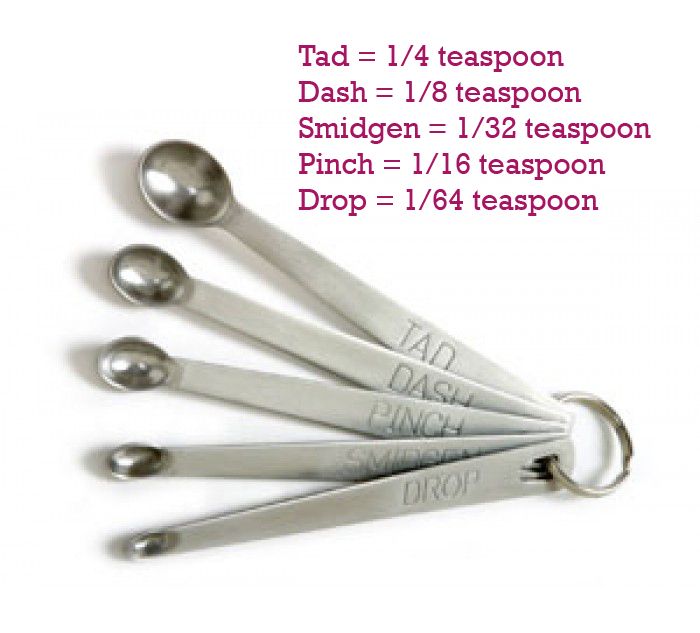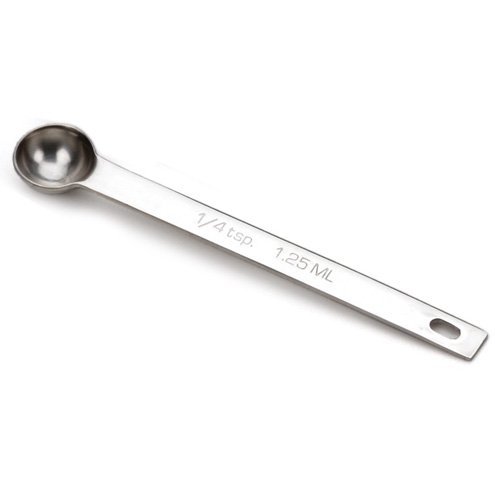Understanding Measurements: What is a Quarter of a Teaspoon?
When it comes to cooking and baking, precision is key. You often encounter various measurements and units in recipes, and one common unit is the teaspoon. But have you ever wondered what exactly a quarter of a teaspoon is? In this article, we will explore this topic in detail, providing you with a clear understanding of this measurement and how to use it in your culinary adventures.
I. The Basics of Teaspoon Measurements

The Basics of Teaspoon Measurements
Before we delve into what a quarter of a teaspoon is, let's start by understanding the basics of teaspoon measurements. In the culinary world, there are two main types of teaspoons: the US teaspoon and the metric teaspoon.
1. US Teaspoon
The US teaspoon is the most commonly used teaspoon measurement in the United States. It is equivalent to approximately 4.93 milliliters (ml). This teaspoon is typically used for measuring ingredients like salt, sugar, and spices.
2. Metric Teaspoon
The metric teaspoon, on the other hand, is used in most countries around the world, except for the United States. It is equivalent to exactly 5 milliliters (ml), making it slightly larger than the US teaspoon. When you encounter teaspoon measurements in recipes from countries using the metric system, they are referring to the metric teaspoon.
II.What is a Quarter of a Teaspoon?

What is a Quarter of a Teaspoon?
Now that we have a grasp of teaspoon measurements, let's answer the main question: What is a quarter of a teaspoon? A quarter of a teaspoon is simply one-fourth (1/4) of the measurement of a full teaspoon. Depending on whether you are using the US teaspoon or the metric teaspoon, the actual quantity will vary slightly:
Quarter of a US Teaspoon: This is approximately 1.23 milliliters (ml). It's a small but significant amount, often used when you need to add a subtle hint of an ingredient to your recipe.
Quarter of a Metric Teaspoon: In this case, a quarter of a metric teaspoon is exactly 1.25 milliliters (ml). It's essentially the same as a quarter of a US teaspoon, making it easy to convert between the two measurements.
III. When to Use a Quarter Teaspoon Measurement
Now that you know what a quarter of a teaspoon is, you might wonder when it's commonly used in recipes. Quarter teaspoon measurements are typically used for ingredients that require a delicate touch or precise seasoning. Here are some examples:
1. Spices and Seasonings
When a recipe calls for a quarter of a teaspoon of a particular spice, it's often because that spice is potent, and a small amount can significantly impact the flavor of the dish. Spices like cayenne pepper, nutmeg, or saffron are good examples.
2. Extracts and Flavorings
Some recipes may require a quarter teaspoon of extracts like vanilla or almond. These extracts are concentrated, so a little goes a long way in enhancing the taste of your baked goods or desserts.
3. Baking Powder or Baking Soda
In baking, precision matters. A quarter teaspoon of baking powder or baking soda can make a noticeable difference in the rise and texture of your baked goods. Too much or too little can affect the final result.
IV. Converting Quarter Teaspoon to Other Units
In some cases, you might need to convert a quarter teaspoon measurement to other units, especially if you're using different measuring tools. Here's a quick reference for common conversions:
Teaspoon to Milliliters: 1 US teaspoon = 4.93 ml, 1 metric teaspoon = 5 ml
Quarter Teaspoon to Milliliters: 1/4 US teaspoon ≈ 1.23 ml, 1/4 metric teaspoon = 1.25 ml
In conclusion, a quarter of a teaspoon is a precise measurement used in cooking and baking to add just the right amount of an ingredient without overwhelming the dish. Whether you're using a US teaspoon or a metric teaspoon, knowing how to measure a quarter teaspoon accurately is an essential skill for any home cook or baker. So, the next time you come across this measurement in a recipe, you'll be well-prepared to create delicious dishes with just the right balance of flavors.